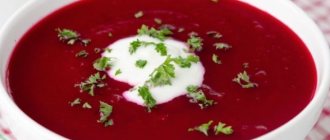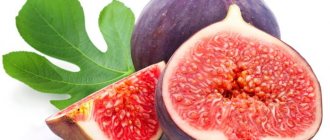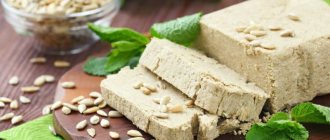Breast milk cannot be replaced by any product in the world. But for this purpose, mom's menu must be perfect. To begin with, it is better to try proven products. Broccoli is a vegetable plant better known as cabbage. According to genetic characteristics, it precedes cauliflower. It looks like a thick stem with leaves, the upper part of which contains groups of green buds with unopened flowers, collected in a fluffy head. Broccoli is eaten along with the stem, and thanks to its unique composition, it can very quickly be introduced into the diet of a breastfeeding mother. Miracle cabbage contains a lot of folic acid, vitamins A and B, and much more C than citrus fruits.
How to choose a product
The quality composition of products is the most important issue for young mothers. As for asparagus cabbage, it can be purchased in two types - fresh and frozen.
The first option should have an attractive shade, all parts of it should have a rich green tint, a slight purple is allowed. Make sure that the stem is strong and juicy. If the vegetable looks limp and has already begun to turn yellow, it is better to refrain from purchasing it, because it is either stale or overripe.
When choosing a frozen type of cabbage, give preference to a well-known or familiar manufacturer. The presence of sticky pieces and ice in the package is a consequence of improper storage or re-freezing.
Consumers believe that a frozen product contains fewer vitamins than one picked from the garden. This is not true for broccoli. If you adhere to the standards of proper freezing and storage, asparagus from the freezer has much more healing properties. After all, during the transportation process, the healthfulness of the product is lost.
Valuable composition of broccoli
At first, breastfeeding provides the basic needs of a rapidly developing child's body. For this reason, a mother’s menu should have balance, be varied and complete. The ingredient composition of asparagus cabbage is saturated with numerous beneficial elements, so this vegetable is considered the most useful in the diet of all people.
Micro- and macroelements, a rich vitamin composition, which are present in broccoli, saturate mother's milk with everything necessary. Experts recommend consuming at least 200 g of the product per meal. This relatively small volume contains the following amount of essential vitamins from the daily requirement:
- K - 170%;
- C - 150%;
- A - 60%;
- potassium and foul. acids - 25% each.
In addition to these groups of elements, the vegetable also contains minerals in significant quantities.
To ensure that the digestive system does not malfunction, there should be a lot of fiber in daily consumption. Their presence in the body increases the growth of microflora cells in the gastrointestinal tract. Coarse fibers are needed to prevent common diseases, as well as to remove toxins and cholesterol.
Cabbage is also an active supplier of phytosterols to the body. The substance prevents the absorption of cholesterol in the intestines and prevents the appearance of negative neoplasms.
Another valuable component is an organic compound of plant origin called “sulforaphane”. It has anti-cancer properties, antibacterial and anti-inflammatory effects.
Broccoli contains a lot of beta-carotene, which has a beneficial effect on vision, actively regenerates cells, and helps maintain a normal immune system.
Beneficial features
The low calorie content of broccoli helps in the fight against extra pounds. Regular use leads to the following positive effects:
- The functioning of the gastrointestinal tract (gastrointestinal tract) is normalized.
- The body is cleansed of toxins.
- Blood sugar levels decrease.
- Your mood improves.
- Bones and vessel walls are strengthened.
- The work of the heart is normalized.
- The blood is purified.
Recent clinical studies have proven that the product fights cancer. The substance sinigrin it contains promotes the natural death of precancerous cells.
To prevent the disease, you need to constantly consume a green storehouse of vitamins:
- Young mothers are susceptible to depression after childbirth. A tasty and healthy meal of broccoli helps the body produce the hormone dopamine. At the same time, your mood improves significantly, anxiety decreases, stress and depression go away.
- Anemia is another problem after delivery. The miracle vegetable contains a large amount of iron, making it ideal for nursing mothers.
- Folic acid improves the functioning of the cardiovascular system and also helps absorb incoming iron.
- B vitamins (5, 6, 2, 1) improve intestinal function.
- Fiber removes toxins and creates a feeling of fullness for a long time.
- Magnesium fights insomnia, relieves nervous tension, and relaxes muscles.
- Magnesium and calcium give you a boost of energy and strength.
- Potassium prevents excess fluid from accumulating in the body.
- Antioxidants give skin and hair a healthy appearance.
During breastfeeding, mothers' hair falls out with terrible force. The green vegetable prevents hair loss. Dry skin also disappears and acne disappears.
Nutritional value per 100 grams:
- calories - 28 kcal;
- carbohydrates - 6.64 g;
- fats - 0.37 g.
This true gift of nature helps in the fight against extra centimeters and does not cause allergies or adverse reactions.
In case of individual intolerance, it is necessary to exclude cabbage from the diet.
Useful nutrients per 100 g:
| Nutrients | Content, mg | Content, % |
| vitamin C | 89,2 | 149 |
| vitamin A | 0,386 | 21 |
| vitamin E | 0,17 | 1,5 |
| vitamin K | 101,6 | 85 |
| calcium | 47 | 5 |
| zinc | 0,41 | 4 |
| iron | 0,73 | 9 |
| copper | 0,049 | 5,5 |
| sodium | 33 | 2 |
| potassium | 316 | 7 |
| magnesium | 21 | 5 |
| selenium | 5 | 5 |
| manganese | 0,210 | 9 |
| folates | 63 | 16 |
| niacin | 0,639 | 4 |
| pantothenic acid | 0,573 | 12 |
| pyridoxine | 0,175 | 13 |
| riboflavin | 0,117 | 9 |
| thiamine | 0,071 | 6 |
The proteins contained in the vegetable are easily absorbed by the body. During feeding, beneficial substances pass through breast milk to the baby. Due to the high calcium content, the possibility of developing rickets in a newborn is minimized.
Negative effects of broccoli
Asparagus rarely causes allergies. But sometimes a child may experience increased flatulence and upset bowel movements. This is due to the lack of the required amount of enzymes and the immaturity of the digestive tract of the infant. As the child's body grows, the symptoms disappear. These shortcomings occur due to the dishonesty of manufacturers who overdo it with the application of fertilizers and other stimulants to speed up plant growth and get rid of pests.
The high content of coarse fibers increases gas formation and changes in the structure of the stool. Vitamin K negatively affects blood clotting. If the mother suffers from stomach diseases, then broccoli can provoke an exacerbation.
Infants may exhibit congenital hypersensitivity to ascorbic acid, which the product is rich in. In this case, the allergy will be expressed in nervousness, itching and redness on the skin, diaper rash and rashes. The eyelids may swell, swelling of the mucous membranes of the lips and nose, and intestinal colic may occur.
If the described signs are present, you should stop taking the product and contact your pediatrician.
Can a nursing mother of a newborn eat broccoli and what are its benefits?
So, first, let's decide how safe broccoli is and whether pediatricians allow it to be eaten during lactation.
Of course, this variety of cabbage can be included in the menu of a young mother, and such a product is not just acceptable, but even recommended. The thing is that inside the inflorescences of this small plant there is a lot of useful substances hidden; this is a complex that is literally necessary for both the body of the mother herself and her baby.
Since some of the substances from the mother’s diet pass through the milk to the baby, this allows for a qualitative influence on his development and improves health. Why is broccoli actually so beneficial?
- Broccoli contains a lot of vitamins and minerals, which are almost completely preserved with gentle heat treatment. Since after childbirth most of the personal reserves of nutrients in a woman’s body are depleted, such food comes in handy.
- This variety of cabbage contains the vitamin folate, which reduces the likelihood of developing cancer and helps cells in the human body function correctly and without failures.
- One of the most important features of broccoli is that it contains both a large amount of vitamin K and calcium. This vitamin is known for helping the body better absorb calcium and send it directly to the bones. Since the child is actively growing after birth, his need for these substances becomes significant. We can say that broccoli helps the baby grow actively and strengthens its bones.
- A number of vitamins, such as A, C, E and B, are excellent helpers in the fight for healthy skin. Many mothers notice that after childbirth, their skin becomes dull and lifeless. This set of useful elements activates the production of collagen, thanks to which the skin becomes elastic and nourished again.
- Microelements, such as sulfur and a number of amino acids in broccoli, help remove toxic and poisonous substances from the body. This has a beneficial effect on the functioning of many systems in the body and its overall functioning.
- Some substances present in this vegetable have an anti-inflammatory effect. In addition, they reduce the strength of a negative reaction, for example, allergies, which is quite important during lactation, when a child can experience it at any time.
- Broccoli is rich in fiber. This type of plant fiber is necessary for the intestines to function properly. Thanks to it, broccoli stabilizes digestion and also promotes better absorption of nutrients.
- This cabbage is rich in omega-3 fatty acids. These substances are known to strengthen the cardiovascular system, and also make the walls of blood vessels more elastic and prevent the formation of blood clots.
- Vitamin C and a number of other elements have a beneficial effect on the immune system of mother and baby. As a result of regularly eating broccoli, the immune system is significantly strengthened and the body is better able to resist all kinds of diseases and infections.
Eating broccoli during lactation
It is recommended to gradually introduce asparagus cabbage into the diet when the child is at least 1 month old. At the initial stage, it is necessary to prepare vegetable soup - this will make the new product easier to digest. You need to start with 1-2 tablespoons, and then carefully monitor the baby’s reaction for 2 days. If an allergy occurs, the introduction of broccoli should be postponed for one month. Then, when the baby’s digestive system gets stronger, try again.
When breastfeeding, asparagus can be consumed boiled or stewed. In its raw form, it can lead to disorders of the gastrointestinal tract and, extremely rarely, cause poisoning.
It is allowed to boil, stew and bake vegetables. The first meals should fit within the daily norm of 50 grams, frequency per week - no more than 3 times. Overeating can cause bloating. Gradually the portion must be increased to 200-250 g.
Benefits and harms for the mother
It is recommended to introduce boiled cabbage into your diet. If there is no negative reaction in the baby, the product can be consumed stewed as a separate dish.
The leafy vegetable brings many benefits to the woman’s body:
- stimulates the production of breast milk, saturates it with vitamins and mineral compounds;
- suppresses the growth of pathogenic microorganisms;
- has a general strengthening effect, increases the functional activity of the immune system;
- relieves constipation, improves intestinal motility;
- B vitamins prevent the development of sclerosis and improve cognitive function;
- increases performance, gives vigor;
- promotes the removal of slag masses, toxic compounds and excess liquid;
- reduces serum levels of bad cholesterol;
- increases the elasticity of blood vessels, improves hematopoiesis;
- Vitamin A protects the retina from the negative effects of ultraviolet radiation;
- Regular use of cabbage prevents the development of breast cancer and prevents the formation of blood clots;
- Antioxidants in the product improve the condition of nails, strengthen hair, and restore the elasticity and firmness of the skin.
Stewed cabbage causes harm due to diseases of the digestive tract. These include ulcers, enterocolitis, gastritis of hyperacid and hypacid forms in the acute stage. When a leafy vegetable enters a woman’s stomach, it stimulates the production of hydrochloric acid and active enzymes, and therefore can aggravate the pathological process.
Abuse of herbal products leads to the following effects:
- increased gas formation in the intestines;
- bloating, feeling of heaviness in the epigastric area;
- increased risk of developing gastritis, heartburn;
- constipation, flatulence;
- In rare cases, an allergic reaction to the product is possible.
The best way to cook asparagus cabbage
Due to its tendency to quickly deteriorate and lose its beneficial properties, the vegetable is prepared immediately after purchase. It is advisable to store no more than 2-3 days in the refrigerator with the required level of humidity. It is better not to use bags and containers because they will not allow air to circulate.
It is necessary to wash cabbage before cooking. You can cook for 5-7 minutes in boiling water - this way the maximum healing properties will be preserved. If you are preparing soup, add the vegetable 5 minutes before it is ready. The finished dish should be consumed immediately when it is hot. Storage in a closed container in the refrigerator is allowed for no more than 3 days.
Broccoli goes perfectly with other types of vegetables, sunflower oil and sour cream. It is appropriate in salads, appetizers, soups, individual dishes, side dishes for fish and meat.
Asparagus cabbage cannot be cooked in a microwave oven, because this way it loses a large amount of microelements and does not bring the desired benefits.
Miracle vegetable
One of the main undoubted advantages of broccoli is that it is hypoallergenic. Allergies to this vegetable are extremely rare. In addition, broccoli is simply a storehouse of vitamins and valuable substances. It is useful for almost all body systems.
The composition of this type of cabbage contains a large amount of folic acid, which improves brain activity. If a nursing mother includes broccoli in her diet, then her baby develops a stable nervous system.
Another unique substance in the composition is tryptophan (a type of amino acid). The production of serotonin, the so-called happiness hormone, depends on it. Therefore, when you eat broccoli dishes, you get a certain positive charge.
Calcium and phosphorus are microelements. Not only the infant, but also his mother urgently needs them. The problem of a lack of these substances has been known to all mothers since pregnancy. If you regularly eat broccoli, the mother will replenish the supply of calcium that she shares with the baby, and the child will strengthen the skeletal system and reduce the risk of developing rickets.
The beneficial effects of broccoli have also been proven for the condition of blood vessels. The inner surface of blood vessels becomes protected, the risk of damage is reduced and the formation of cholesterol plaques is prevented.
Sulforaphane, sinigrin and indole-3-carbinol - these obscure names are very well known to oncologists. They help in the treatment of tumors and prevent their development.
By eating 100 g of broccoli per day, you can provide yourself with the daily norm of ascorbic acid and vitamin K. A slightly larger volume of the vegetable contains the required amount of vitamin A.
In addition to all of the above, regular consumption of broccoli:
- will provide you with good immunity;
- improve hair and nails;
- regulates the functions of the digestive system;
- reduce blood sugar;
- improves heart function;
- improve blood composition;
- will cleanse the body and remove toxins.
Recipes using broccoli
Cream soup
Compound:
- 0.9 kg of inflorescences;
- 1.2 liters of broth;
- 1 onion;
- 3 cloves of garlic;
- rast. oil for sautéing;
- salt on the tip of a knife.
How to cook:
Saute finely chopped onion in a frying pan. Chop the inflorescences and add the garlic to the onion. Simmer the ingredients over low heat for several minutes, add a little salt. Add broth and boil. Remove from heat, mix with a blender until smooth. It would be useful to add a little cream. The finished dish tastes better with crackers or cheese.
Vegetable Salad
Compound:
- 650 g of inflorescences;
- 2 medium carrots;
- 3 potatoes;
- 3 cucumbers;
- celery
- parsley;
- dill;
- linseed oil.
How to cook:
Prepare the cucumbers for use and cut as you like. Boil the inflorescences with one bay leaf. Boil the potatoes in their skins, peel and chop into small cubes. Boil the carrots, peel and grate on a coarse grater. Chop the celery and herbs finely with a knife. Mix everything, add salt, prepare linseed oil for dressing. Can be replaced with sour cream or bechamel.
Rice soup with vegetables
Compound:
- 350 g of inflorescences;
- 1.5 liters of vegetable-based broth;
- 1-2 carrots;
- 1.5 cups rice;
- 1 onion;
- sunflower or olive oil;
- a pinch of salt.
How to cook:
Buy vegetables from a trusted manufacturer. Prepare them for cooking. To do this, chop the onion and simmer in oil for a couple of minutes. Wash the carrots, peel and grate on a coarse grater. Place the vegetables in a saucepan and pour in the broth. Rinse the rice and add to the broth. Add salt and cook everything for about 35 minutes. Cut the inflorescences into pieces, add to the main composition and boil for about 5 minutes.
Cheese farfalle
Compound:
- 270 g farfalle;
- 340 g of inflorescences;
- 70 g cheese;
- olive or sunflower oil;
- pepper and salt.
How to cook:
Wash the cabbage and separate into florets. Boil in boiling, lightly salted water. After cooking, drain the water. Grate the cheese on a fine grater. Cook the farfalle without a lid at a moderate boil for 10 minutes, drain the liquid and season with oil. Mix all ingredients of farfalle cheese well.
Hearty salad with chicken breast
Compound:
- chicken breast;
- several cabbage inflorescences;
- 240 g hard cheese;
- 1 clove of garlic squeezed through a spade;
- salt;
- 60 g sour cream, or 2 full tablespoons.
How to cook:
Boil and cool the breast, cut into small pieces. Cook the cabbage for approximately 5 minutes in salted boiling water, divide into inflorescences and parts. Combine chicken and cabbage, add garlic and cheese. Add salt, add sour cream as a dressing and stir well.











